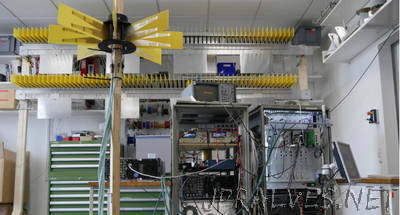
“Mobile base stations for 5G solutions will consist of hundreds of small antennas. Benefits include faster transmission, improved energy efficiency, better security and wider coverage. Researchers at Aalborg University are at the forefront of developing the new antenna technology. As we move toward a world that is increasingly interconnected with a 5G network that is expected to roll out during the next 3-5 years, the need for a well-functioning mobile network with ample room for more connected devices as well as increased data traffic becomes increasingly important. “With the ‘internet of things’ as it is popularly known, more and more devices need to be connected,” says Elisabeth De Carvalho, Associate Professor in the Department of Electronic Systems at Aalborg University. Along with her colleagues Associate Professors Patrick Eggers, Jesper Ødum Nielsen and PhD fellow Anders Karstensen and with funding from the Chinese technology giant Huawei she is working on a new type of base system that caters to the seemingly endless increased need for data transmission. The system that is still in its early stages is called a ‘massive MIMO’. MIMO is an abbreviation for ‘Multiple-Input Multiple-Output’ – a wireless technology used to transmit and receive data between a large crowd of connected devices and users at the same time. In today’s mobile base stations - the mobile antennas that we might have noticed attached to tall buildings or rooftops – each unit might have a maximum of eight antennas that point out in different directions, spreading out data transmission over a large area. But the team in Aalborg is working on a base station unit that holds several hundred antennas, making it possible to connect much more precisely to each mobile unit.”
Link to article
